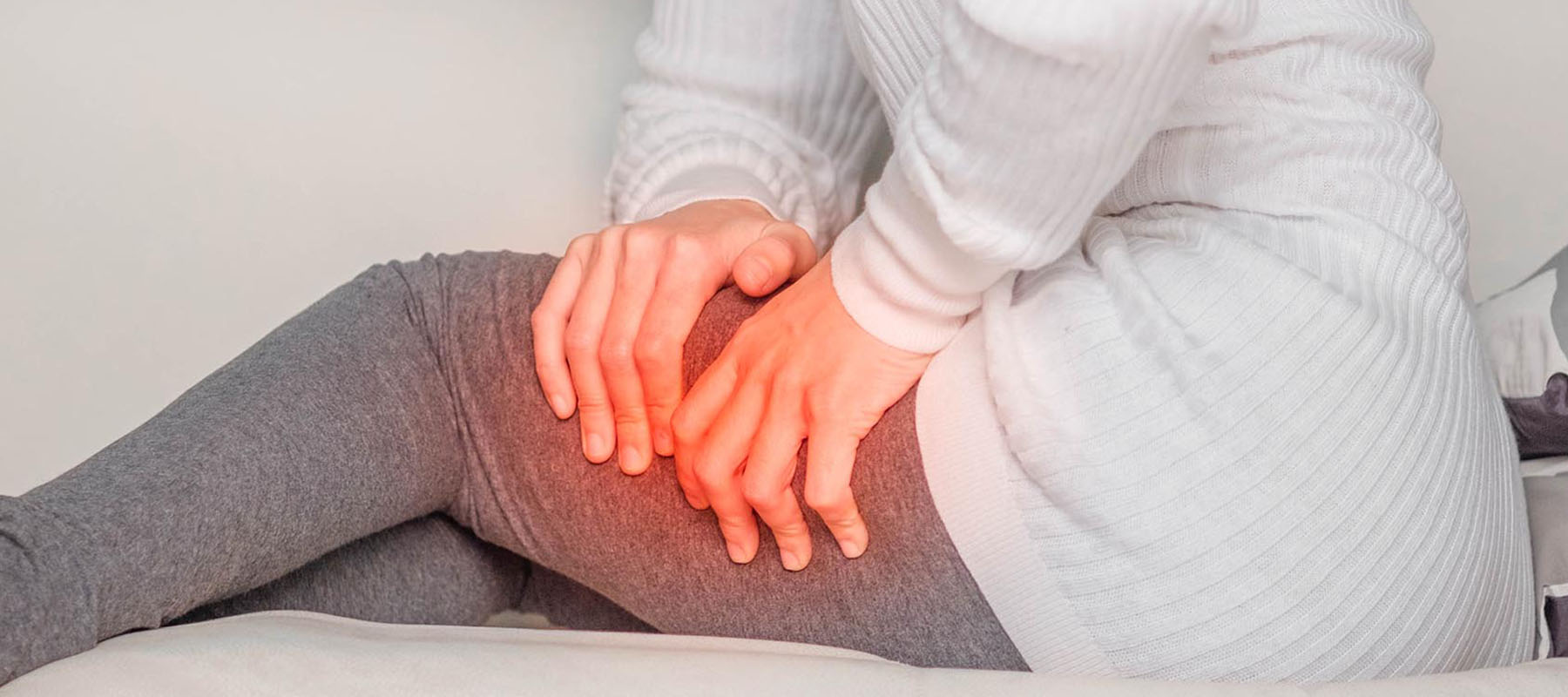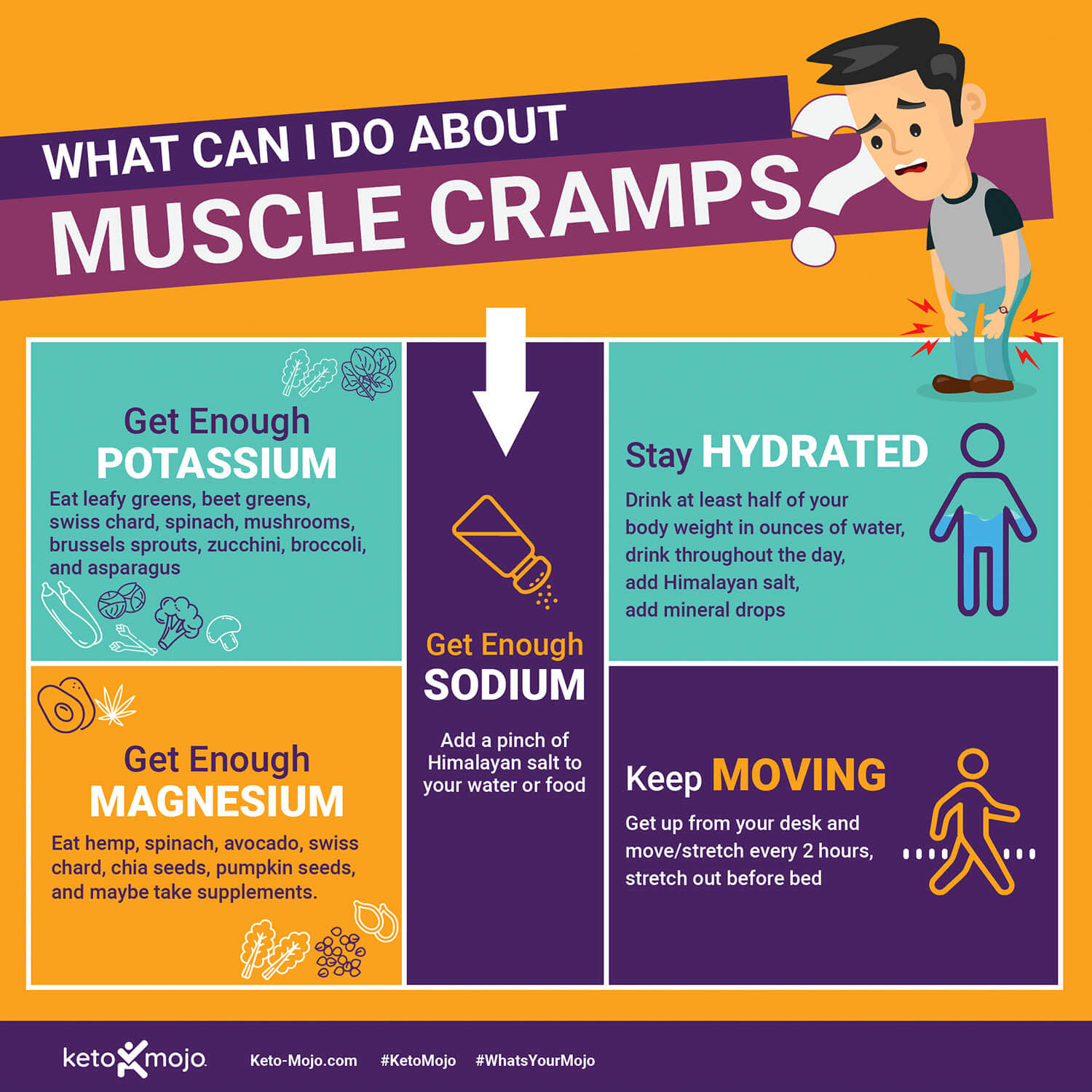UPDATED BY FRANZISKA SPRITZLER, RD, CDCES
Muscle cramps, particularly in the legs, are a common experience when starting a ketogenic diet. They’re one of the classic signs of the “keto flu,” a group of temporary side effects that can appear as your body adjusts from burning carbohydrates to burning fat as its main fuel source. The good news is that these cramps are usually easy to fix.
Below, we explore what causes them on a keto diet and the simple steps you can take to find relief and feel your best.
What Causes Leg Cramps on Keto
Leg cramps on a ketogenic diet are often caused by an imbalance of important minerals – often magnesium, but sometimes sodium or potassium too – along with mild dehydration. These shifts are especially common in the early stages of keto, when your body is still in the keto–adaptation process. Muscle cramps can happen at any time, day or night, and they can affect you whether you’re trying to lose weight or not.
Electrolyte (Mineral) Imbalance
When you cut carbohydrates from your diet, your insulin levels naturally decrease. As insulin decreases, your kidneys begin to retain less sodium, causing more of it to be excreted through the urine. This loss can lead to a sodium deficiency and an electrolyte imbalance, which may trigger symptoms like leg cramps.
Electrolytes are positively charged minerals that play a vital role in many bodily functions, particularly those involving muscles and nerves. They’re present in fluids like blood, sweat, and urine, and they help move fluids in and out of your cells, support muscle contraction and relaxation, and assist with nerve signaling. The electrolytes most commonly involved in keto-related leg cramps are sodium, potassium, and magnesium.
Dehydration
As your body transitions from using glucose to ketones and fats for energy, it first depletes its stores of glycogen, the stored form of glucose found in the liver and muscles. Because glycogen is bound to water, breaking it down releases that water, which is then excreted through urine. This initial loss of water explains the rapid drop in weight many people experience when starting a ketogenic or low-carbohydrate diet. While this can be encouraging, it also increases the risk of dehydration, particularly if adequate fluid intake is not maintained.
Other Reasons for Muscle Cramps
There are a few other factors that might be causing your muscle cramps, such as consuming too much caffeine, exercising without drinking enough to make up for sweating, or sitting for too long without moving your body.
Caffeine
Drinking too much coffee could increase your chance of leg cramps when you start a keto diet because caffeine stimulates your muscles to contract instead of encouraging muscle tissue to relax. It’s also a diuretic, so it takes water out of your body, which can lead to dehydration and muscle cramping.
Exercising without hydrating
Sweating results in the loss of both water and electrolytes, which is why electrolyte replacement is emphasized during and after physical activity. While many people turn to sports drinks for this purpose, most commercial options are high in sugar and not suitable for a ketogenic lifestyle.
Sitting for too long
Electrolyte imbalances are a common cause of nocturnal leg cramps, which often worsen with prolonged inactivity. Limited movement during the day may contribute to muscle tightness, making cramps more likely to occur at night. In some cases, simply getting up and walking can help relieve a cramp by improving circulation and gently stretching the affected muscles.
How to Remedy or Avoid Muscle Cramps When Starting Keto
Now that you know what causes leg cramps, what can you do to fix them or avoid getting them in the first place? We have some simple cramp prevention solutions to help you get those leg cramps under control quickly. Let’s start with the minerals.
Ensure You’re Getting Enough Potassium
Potassium plays a vital role in cellular energy balance by supporting fluid regulation and the transport of nutrients and waste across cell membranes. It also works alongside sodium, calcium, and magnesium to coordinate muscle contraction and relaxation. When potassium levels are low, muscle cramps – especially in the legs – can become more frequent.
To help maintain adequate potassium, it’s important to include potassium-rich foods in your diet. While many high-potassium foods like sweet potatoes, lentils, and coconut water are too high in carbohydrates for a ketogenic diet, there are plenty of keto-friendly options. Leafy greens such as beet greens, Swiss chard, and spinach are excellent sources, as are vegetables like mushrooms, Brussels sprouts, zucchini, broccoli, and asparagus. Avocados provide both potassium and healthy fats, and fish such as wild salmon, sardines, and mackerel also contribute modest amounts.
A well-formulated ketogenic diet that emphasizes these foods can help support potassium balance and reduce the risk of muscle cramps.
Ensure You’re Getting Enough Magnesium
Magnesium is the fourth most abundant mineral in the body and is essential for health, yet many people are deficient – even those following a nutrient-dense, ketogenic diet. This is partly due to modern agricultural practices that have depleted magnesium levels in the soil, compounded by further losses during food processing. Magnesium functions as a cofactor in more than 300 enzymatic reactions and is especially important for nerve transmission, muscle function, energy production, and relaxation.
Magnesium and calcium work together to regulate muscle and nerve activity. While calcium stimulates muscle contraction, magnesium promotes relaxation. Unfortunately, the typical Western diet is often high in calcium but low in magnesium, which can lead to an imbalance. Without enough magnesium to counter calcium’s effects, muscles may remain in a contracted state, contributing to cramping.
To support healthy magnesium levels, it’s important to include magnesium-rich, keto-friendly foods in your diet. Leafy greens such as spinach and Swiss chard are excellent sources, as are avocados, hemp seeds, chia seeds, and pumpkin seeds. However, it can be challenging to meet your magnesium needs through food alone on a low-carb diet magnesium supplementation may also be beneficial.
Ensure You’re Getting Enough Sodium
Sodium plays a critical role in maintaining fluid balance both inside and outside of cells and serves as a cofactor in muscle contraction and nerve function. It also helps regulate the balance of other key electrolytes, including potassium and magnesium. A lack of sodium may contribute to muscle cramps.
To help maintain sodium balance on a keto diet – especially during the keto adaptation phase – consider adding a pinch of Himalayan or sea salt to your meals or water throughout the day. These unrefined salts provide sodium along with lesser amounts of trace minerals. Increasing sodium intake in this way can help ease symptoms and support proper hydration and electrolyte balance, particularly as your body adapts to using ketones for fuel.
Stay Well Hydrated
One of the simplest and most effective ways to support hydration is to drink water consistently throughout the day. A general guideline is to consume at least half your body weight in ounces of water daily. For instance, if you weigh 150 pounds, aim for around 75 ounces (2.6 liters) of water. If you consume diuretics such as coffee or tea, consider increasing your water intake by approximately 1½ cups for every cup of caffeinated beverage.
If you’re physically active while following a ketogenic diet, it’s especially important to hydrate before, during, and after your workouts. Adding mineral drops to your water is a convenient option; these typically contain concentrated trace elements that support electrolyte balance. Keto-friendly electrolyte powders can also be useful, particularly after exercise or periods of heavy sweating. These are typically free of added sugars and can be mixed into water or smoothies. Some individuals also find that a small amount of pickle juice – rich in sodium and other electrolytes – can be helpful for preventing or relieving muscle cramps related to dehydration.
Keep Moving
Prolonged sitting is associated with various health concerns, including increased risk of muscle cramps. If you spend much of your day at a desk, make it a point to stand up, stretch, and move your body regularly. Setting a reminder to walk or gently stretch every couple of hours can help promote circulation and reduce muscle tension. Incorporating light stretching before bed may also be beneficial, especially if you exercise regularly or experience muscle tightness at night.
Take Home Message
The key takeaways: maintain proper hydration and electrolyte balance. If you’re dealing with leg cramps while following a ketogenic diet, the strategies outlined above may help alleviate symptoms and support your overall well-being.
As always, it’s wise to consult with your primary care provider or a registered dietitian before making significant dietary changes—particularly if you have underlying health conditions.




